Galleries
See the Top 10 Works From São Paulo’s SP Arte Fair
Check out the best on view in São Paulo this week.
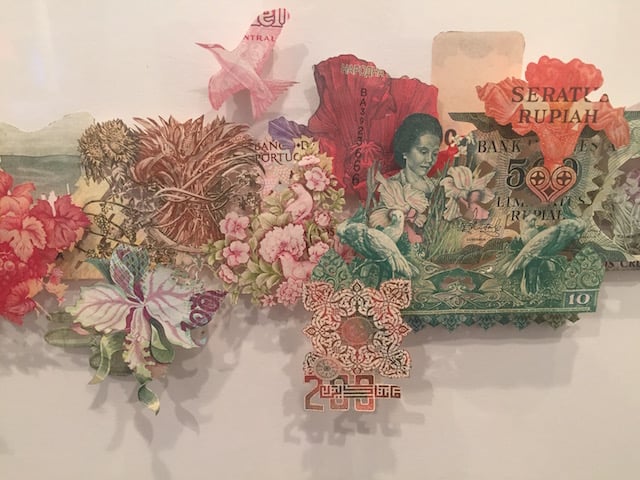
Photo: Brian Boucher.
Check out the best on view in São Paulo this week.

Brian Boucher

Dealers are approaching the 12th edition of the SP Arte fair, in São Paulo, with “no expectations,” owing to a recession in Brazil, several of them told artnet News today. But the atmosphere at the exhibition hall, an airy pavilion designed by late architect Oscar Niemeyer, was nonetheless festive during Wednesday’s VIP preview.
Related: Dealers Head to SP Arte Wary but Hopeful of Brazil’s Buying Power
There’s a lot to see at the fair, from a set of intriguing typewriter drawings to a compelling reference to Felix Gonzalez-Torres’ work. Here are our picks for the top ten artists and works at the fair, which continues through Sunday.
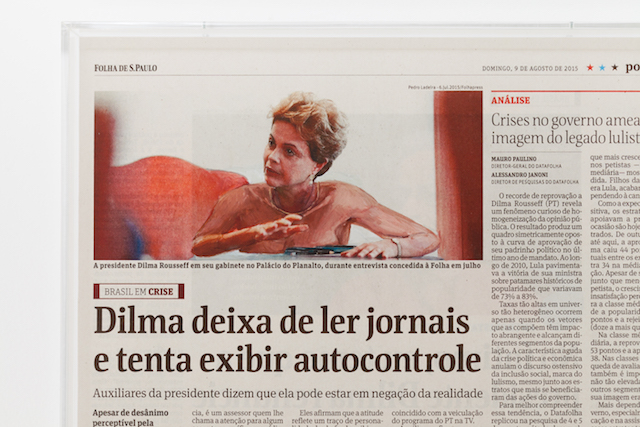
Detail of a work by Sandra Gamarra, showing Brazilian president Dilma Rousseff.
Photo: courtesy Carbono Gallery.
Sandra Gamarra at Carbono Galeria
Peruvian artist Sandra Gamarra, invited by a Chilean dealer to do an exhibition in Brazil, rounded up front-page newspaper articles about embattled presidents in each of those three countries, and painted over the figures’ clothes to make them nude. Above, Brazilian president Dilma Rousseff’s modesty is somewhat protected, though her bare shoulders and part of her breasts are exposed, a metaphor for recent exposure of widespread political corruption.

A detail of a work by Rodrigo Torres at SIM Gallery.
Photo: Brian Boucher.
Rodrigo Torres at SIM Galeria
Rodrigo Torres creates tiny, entrancing worlds out of cut-up pieces of paper currency at Curitiba’s SIM gallery. Egypt, Syria, and Israel sit peacefully alongside each other in an epic collage, where elements of the nationalistic imagery on various bills forms an expansive work that stretches several feet wide. Many of these currencies, the gallery’s Guilherme Simões de Assis pointed out to me, have long since passed out of circulation, despite the hopeful, patriotic rhetoric that announced their introduction.
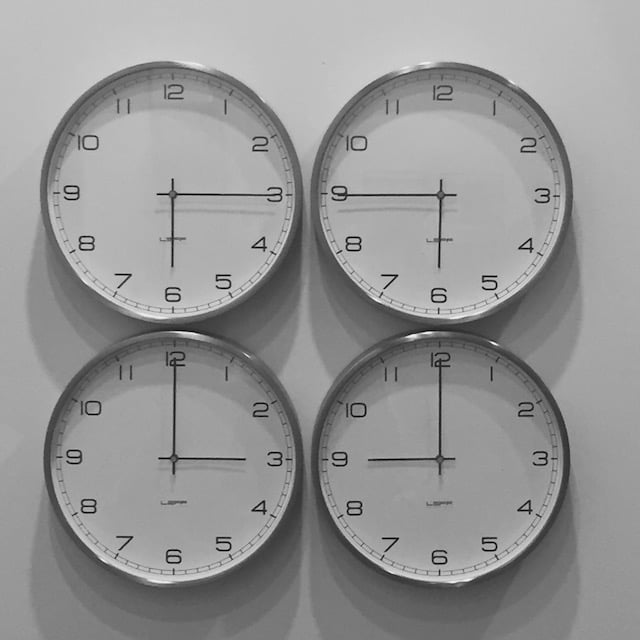
Angela Detanico and Rafael Lain at Vermelho.
Photo: Brian Boucher.
Angela Detanico and Rafael Lain at Vermelho
Four round clocks, with their hands set at right angles, create a square within circles at São Paulo’s Vermelho. The lean geometry of the piece is offset with various associations, like time zones, as well as a subtle reference to Felix Gonzalez-Torres’ classic work Perfect Lovers; in Detanico and Lain’s hands, a duet has become a quartet.
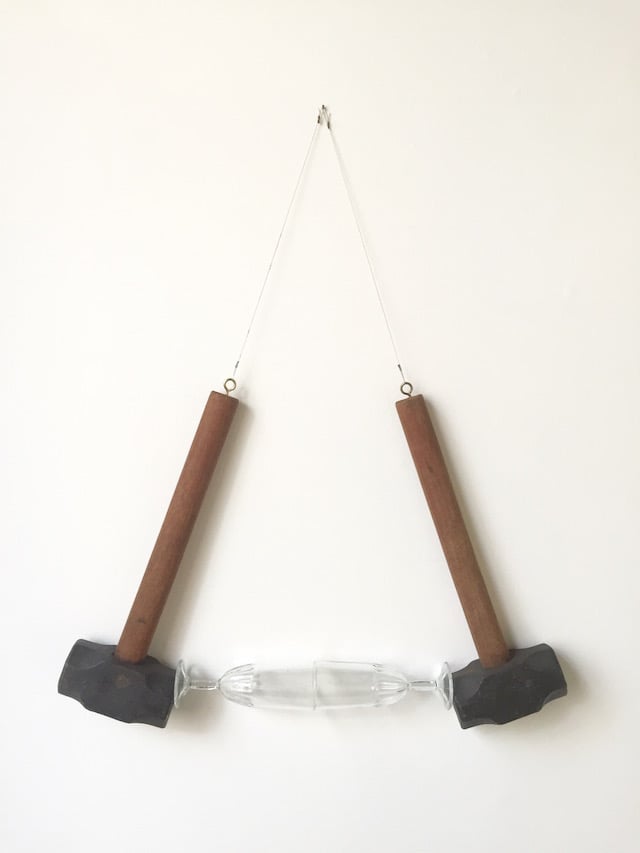
Nino Cais.
Photo: courtesy Casa Triângulo.
Nino Cais at Casa Triângulo
At São Paulo’s Casa Triângulo, Cais suggests violence and tenderness in equal measure in a sculpture that suspends two champagne flutes, held together in a mouth-to-mouth embrace, by the weight of two small sledgehammers that hold them together.
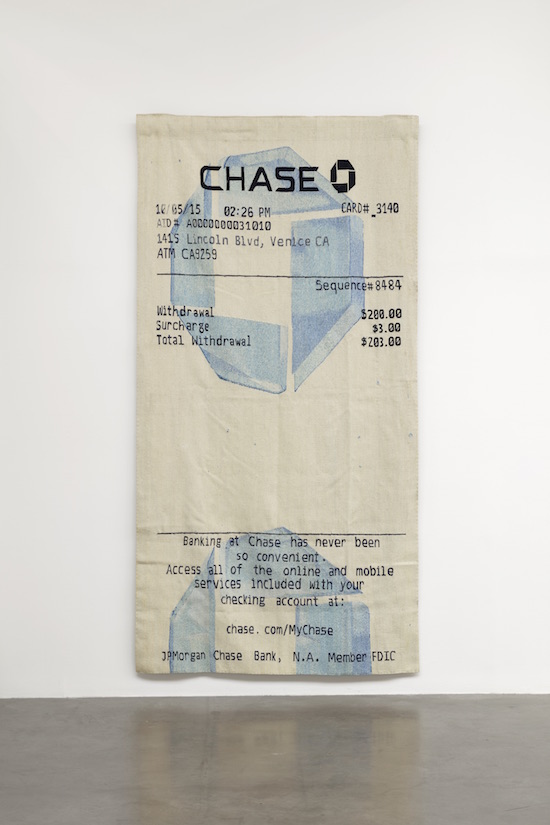
Gabriel Kuri at Kurimanzutto.
Photo: courtesy Kurimanzutto.
Gabriel Kuri at Kurimanzutto
For a while, Kuri was saving all is financial records and turning those into his art; he’s recently turned from these documentary self-portraits to depictions of others as they are revealed by, say, discarded ATM receipts like the one he’s turned into a tapestry here, showing that someone withdrew two hundred bucks at a Chase bank. He drafted artisans at the storied Taller Mexicano de Gobelinos in Guadalajara to create this towering version of a worthless slip of paper for the Mexico City-based gallery’s booth that is rich in information, though it leaves its subject anonymous.
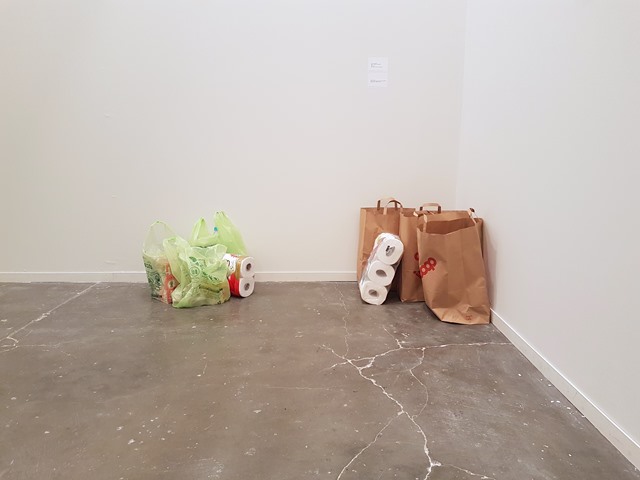
Jason Dodge, Items on a Found Grocery List Bought in Repetition, Several Times in Different Places.
Photo: courtesy Franco Noero.
Jason Dodge at Galleria Franco Noero
Items on a Found Grocery List Bought in Repetition, Several Times in Different Places, by Jason Dodge, an American artist living in Berlin, makes the Italian gallery’s booth appear considerably more homey than it would be otherwise. Paper and plastic bags holding goods as modest as toilet paper are spread around on the floor. They’re from shopping trips in Germany, Finland, Lithuania, and Brazil, and in the context of the fair, it’s hard not to see them partly as a commentary on the interchangeability of the prizes gained at fairs from New York to London.
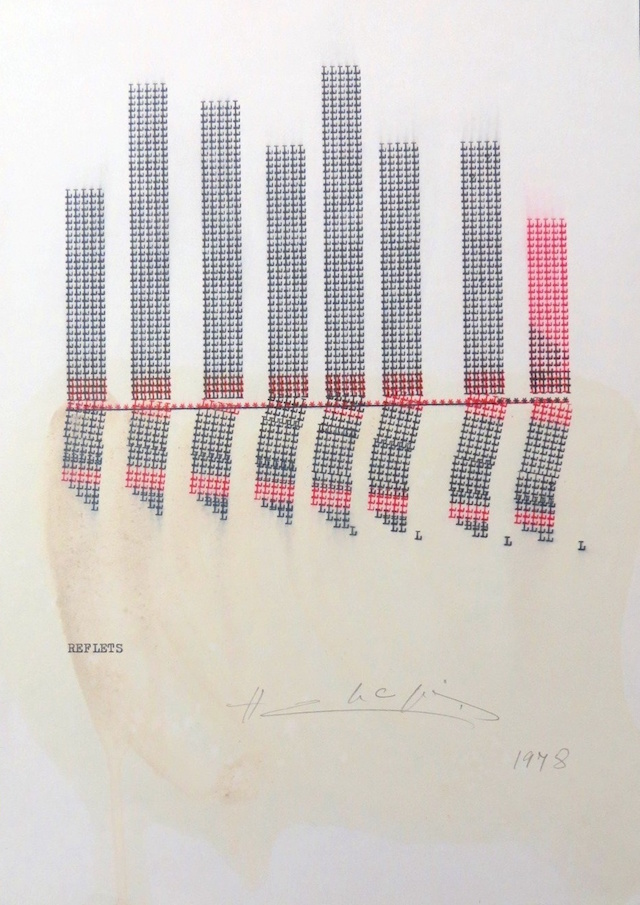
Henri Chopin, Reflets, 1978.
Photo: courtesy Richard Saltoun Gallery.
Henri Chopin at Richard Saltoun
Chopin became an artist after serving time as a prisoner of war in a Russian labor camp during World War II. Here, London’s Richard Saltoun Gallery is showing his letter-size typewriter drawings, which have popped up in shows the world over since his death a few years ago, including “Ecstatic Alphabets” at New York’s Museum of Modern Art. In one of them, he’s typed the sign for the British pound all over an invoice he got in 1975 and that he couldn’t afford to pay.
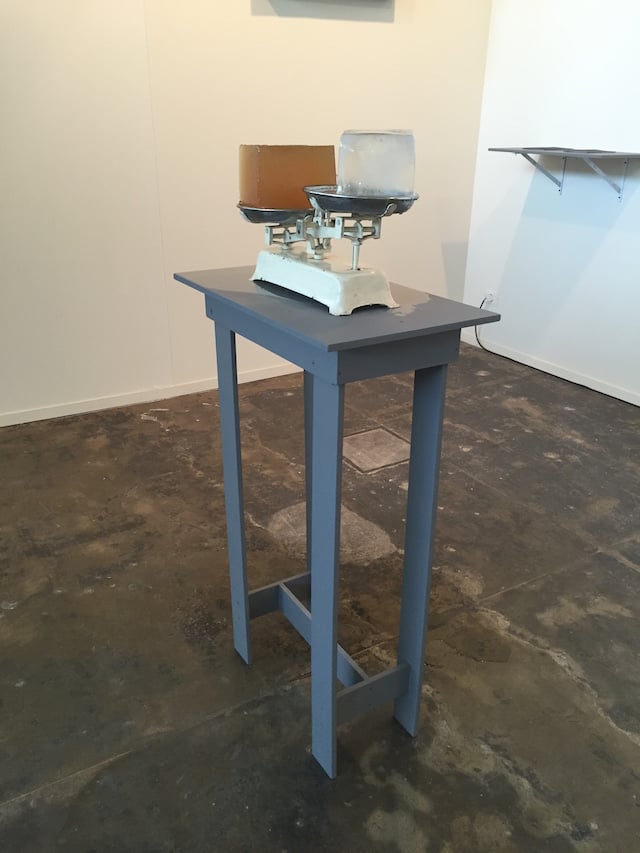
Marilia Furman, Equivalent Exchange and Inequality, 2016.
Photo: courtesy PSM Gallery.
Marilia Furman at PSM
Furman’s works at Berlin’s PSM Gallery engage in a poetic exploration of balance. In one work, for example, a locked padlock and an open one dangle from opposite ends of a cord draped over a pulley, with the locked one hanging lower, as if heavier. At the booth’s center is a work with a block of gelatin and a block of ice of equal weights, resting on opposite sides of a scale; as the ice melts over the course of the day, the water runs over the pan’s edges, and the gelatin wins the contest. Left alone, the gelatin, too, would melt, a process that would take days rather than hours.

Martin la Roche, Cornucopia Archive, at Casa Nova Arte e Cultura Contemporânea.
Photo: Brian Boucher.
Martin la Roche at Casa Nova Arte e Cultura Contemporânea
Art can be as much about removal as about anything else, and the young Chilean artist Martin la Roche here pays tribute to the humble eraser at São Paulo’s Casa Nova Arte e Cultura Contemporânea. The first precedent that came to my mind was Robert Rauschenberg’s Erased de Kooning Drawing, but gallery owner Adriano Casanova pointed out that La Roche also had Richard Long’s sculptural arrangements of stone in mind while creating this piece, Cornucopia Archive.

Still from a two-part video by Juan Zamora.
Photo: courtesy Slowtrack.
Juan Zamora at Slowtrack
Young Zamora found himself overwhelmed with Rome while living there on a fellowship, but soon found the River Tiber to be his way in. An affecting two-part video work at Madrid’s Slowtrack gallery, along with numerous delicate works on paper, documents the artist scooping up a bucket of water from the mouth of the river and then, after a long journey, emptying the bucket at the river’s source, acting as a watery Sisyphus.